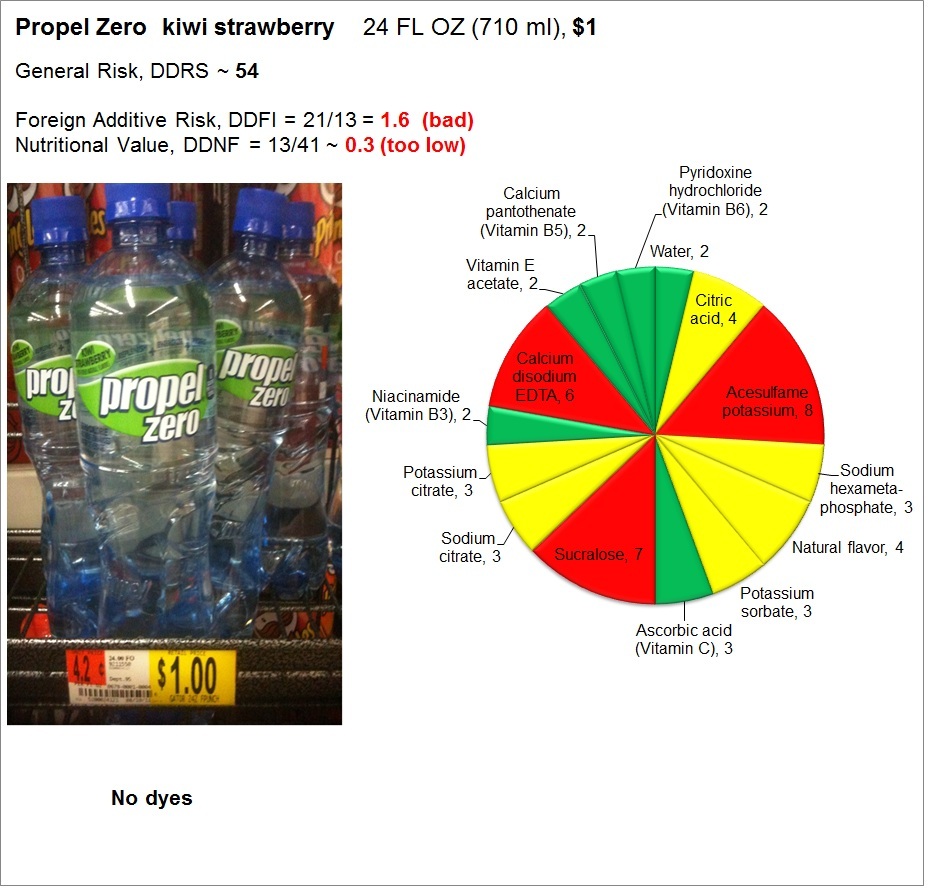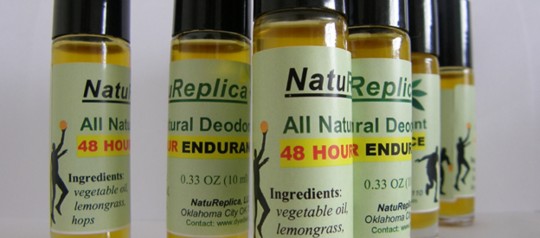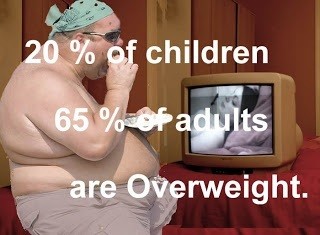Propel Zero: Sucralose is not a solution
“ZERO” in a name or on the front of a label is just another “hook” for those of us who still look for silver bullets and magic pills. And I can understand why… According to the Harvard School of Public Health: “Every day, the government’s food stamp program buys Americans 20 million servings of soda, paying billions for a program that fosters the obesity that the government then has to pay again for in increased health care expenditures.” Perhaps even more sodas Americans buy for their own money. 2005 CSPI report (see Liquid Candy: How Soft Drinks Are Harming American’s Health) reveals that beverage “companies annually produce enough soda pop to provide 557 12-ounce cans – 52.4 gallons – to every man, woman, and child.” Because of multiply negative health effects of sugary soft drinks, many of us switched to DIET sodas or various ZERO calorie beverages. You cannot however trick your own body with sugar replacements without facing possible health consequences (read an article A Role for Sweet Taste: Calorie Predictive Relations in Energy Regulation).
Recently I have reviewed Clear American ZERO calories beverage which is not a healthy beverage at all. Now let us see what Gatorade Co. has to offer with their Propel Zero water drink.
DyeDiet Doesn’t Buy It!
Stated value: Zero Calorie Nutrient Enhanced water beverage; Kiwi Strawberry with other natural flavors. Replenish (Vitamins C & E); Energize (B vitamins); Protect (Antioxidants).
True value: On the front label they don’t tell you that “Protect” provided by the same Vitamins C & E as “Replenish” but at least you can read on the back that antioxidants are Vitamins C & E. OK, this is not a big deal. But for ZERO calorie you will take bad risk associated with the foreign chemicals DDFI = 21/13 ~ 1.6 and you get ridiculously low nutritional value of DDNF = 13/41 ~ 0.3. Forget about kiwi and strawberry too.
- Sucralose is an artificial sweetener, a chlorinated sugar. Recent studies in man volunteers revealed that sucralose was excreted unchanged to some 97% within five days. While sucralose is recognized as “safe” not only by the FDA but also by the Center for Science in the Public Interest the DyeDiet disagrees on the general basis that, chemically, sucralose is still a chlorinated hydrocarbon that is completely foreign to human metabolism. Chlorinated nutrients are common for marine organisms like sponges, sea-weeds etc. but not for land mammals! Many chlorinated compounds are insecticidal and, most insecticides are known to be harmful for humans too. See an opinion about sucralose. Recently sucralose has been named among 3 worst sweeteners. Available data indicate that sucralose has low acute toxicity; oral rat LD50 ~ >10 g/kg; oral mouse LD 50 ~ >16 g/kg (see Section 11 of MSDS). OK with that! But who can swear to the public that regular consumption of sucralose for long years is safe? For instance, it was recently found that “Splenda” consumption in rats during the 12-week studies significantly lowered beneficial intestinal bacterial flora when pathogenic entero-bacteria were not affected. As always, the DyeDiet approach is: Why to take risks with our own life and the lives of our loved ones? However I realize that diabetic people may have no choice unless they want to try Stevia or other natural sugar substitutes instead.
- Calcium disodium EDTA is a chemical agent that binds a variety of metal ions. According to the Wikipedia, EDTA has been found to be both cytotoxic and weakly genotoxic in laboratory animals. Oral exposures have been noted to cause reproductive and developmental effects.
- Acesulfame potassium, another artificial sweetener foreign to human nature. See Acesulfame Potassium MSDS (Section 11 – Toxicology). It is added to hide unpleasant aftertaste of aspartame or sucralose. According to the Wikipedia, “some potential effects associated with Acesulfame K have appeared in animal studies. Acesulfame K has been shown to stimulate dose-dependent insulin secretion in rats, though no hypoglycemia was observed… Critics say acesulfame potassium has not been studied adequately and may be carcinogenic, although these claims have been dismissed by the US FDA and by equivalent authorities in the European Union.”
So explain this to me: Why do you want to pay for this “replenish,” “energize” and “protect” contaminated water 16 times (!!) what you pay for 3 gallons of pure filtered ZERO calorie water? Vitamins are OK but we only need teeny tiny amounts of them whereas excess of vitamins can lead to the intoxication accompanied by nerve and liver damage, nausea, vomiting, etc. As always, moderation is a golden rule to follow, but how can we control vitamins B intake if they are added to so many beverages and baked goods?
If you find it boring to drink plane pure water, try Vitamin Water instead. I hope this brief report helps to make less risky food choices!
Category: Soft drinks, Zero calories








I think it is boring to drink pure plain water. What are some alternatives?
Okay, here’s the problem here: You can’t even find regular Propel in stores now unless you look all across the nation for 1 box. So, we got this Propel Zero these days and while we are all know now that Diet drinks are not good for you, we have no choice if we prefer the taste of Propel over the taste of Gatorade (even if both are made by the same company). And don’t you dare say that it doesn’t hydrate you when you’re walking that 10K, because it does; I rather drink Propel Zero for my walking than water. What’s the worst this sweetener can give you, cancer? I fail to see that conclusion proven true, but I will say that HFCS can make medical bills skyrocket when drank in vast amounts and, yeah, and some extreme cases, HFCS can cause cancer, but I fail to see how a hydrating flavor water that has a sweetener in it cause cancer or even diabetes for that matter.
Well, the thing is that you feel hydration instantaneously after drinking and you have your DNA damage occurring by tiny increments so that after years of intoxication you may or may not have your cancer developed. Based on prevention principle (precautionary principle http://en.wikipedia.org/wiki/Precautionary_principle ) and common sense, why take easily avoidable chances?